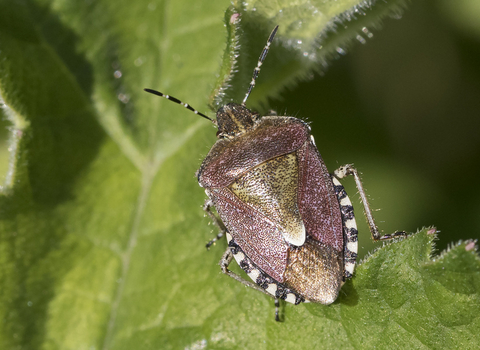
Hairy shieldbug © Chris Lawrence

Hairy shieldbug © Chris Lawrence
Hairy shieldbug
This large shieldbug lives up to its name, bristling with long pale hairs. It's a common sight in parks, hedgerows and woodland edges in much of the UK.
Enw gwyddonol
Dolycoris baccarumPryd i'w gweld
January to DecemberYnghylch
Hairy shieldbugs are a common sight across much of the UK, particularly along hedgerows and at the edges of woodland, but also in parks and gardens. As the name suggests, they're covered in tiny hairs - though you may have to look closely to spot them! They are also known as sloe shieldbugs, because they're often found around blackthorns, where they use their piercing mouthparts to feed on the fruits - called sloes. They also feed on the leaves, seeds and fruits of a wide range of other plants.Hairy shieldbugs spend the winter as an adult, emerging in spring to mate. Females lay clumps of brownish, barrel-shaped eggs that stick firmly to the chosen plant. The young, known as nymphs, are smaller and rounder than the adults, but still covered in pale hairs. They go through several stages of growth, before maturing into their adult form in late summer or early autumn.
